Paper (including cardboard and other paper products) is great for use in the garden. Most of us have far too much of it laying around, so why not make the most of it and make our gardening lives better?
Though there are several ways to use paper in gardening, one of the best ways to use paper in the garden is for weed control.
Why Use Paper for Garden Weed Control?
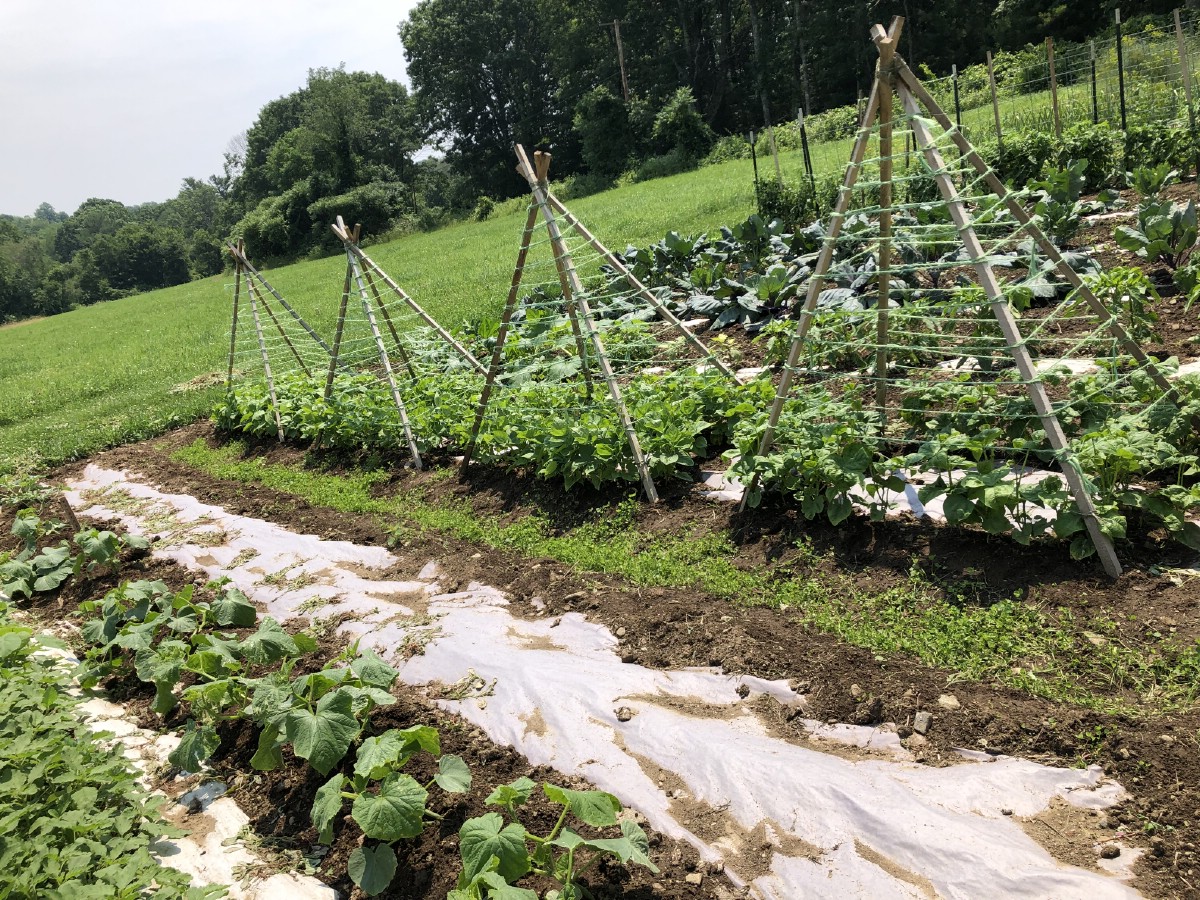
- It’s Cheap. In fact, it can even be free because you can use all sorts of household paper and waste paper from things like newspapers and packaging.
- It’s safe. Paper, paper products, and cardboard are safe to use in the garden. In the past, it has been said that inks used in printing may be unsafe and may contain heavy metals. Unfortunately, these rumors persist today, but those rumors are false. These rumors are a holdover notion from days of lead type printing, as explained by the Chicago Tribune.
- It’s natural. Paper is a natural product made from wood. From trees. It is a natural fiber and a good source of natural carbon that is also useful in compost and in soil. Paper is a much safer, more environmentally friendly, and natural product than refined plastics and similar weed barrier products. Paper can work with your garden and its soil instead of against it.
- It’s biodegradable. Unlike plastic and manufactured weed barriers, paper can break down and return its natural components to the soil. It’s true that the lifespan of paper in the garden is far shorter than plastic and other barriers, but it will last long enough. If used properly it will last a season or more. Cardboard and thicker applications can last multiple seasons.
- It improves and restores soil. Paper in the garden builds soil by adding organic matter when it breaks down and works in (either by time or tilling). It can lighten hard, heavy, or clay soils and improve tilth for better growing. Paper can restore organic matter that is lost through the years of planting or from tilling and erosion.
- It’s eco-friendly, free and easy recycling. Using paper in the garden is one way to recycle or upcycle this waste product without having to pay for removal and without the need for costly transportation, resources, and utilities spent in the recycling process.
- It doesn’t need to be cleaned up! There is no end-of-season cleanup when you use paper or cardboard because it can just be turned in, left to break down naturally on its own, or tilled under when the time comes. In fact, paper is a favorite for no-till and sandwich garden methods for this reason. Because paper improves the soil, it is actually better NOT to clean it up at the end of the season. Win-win for you!
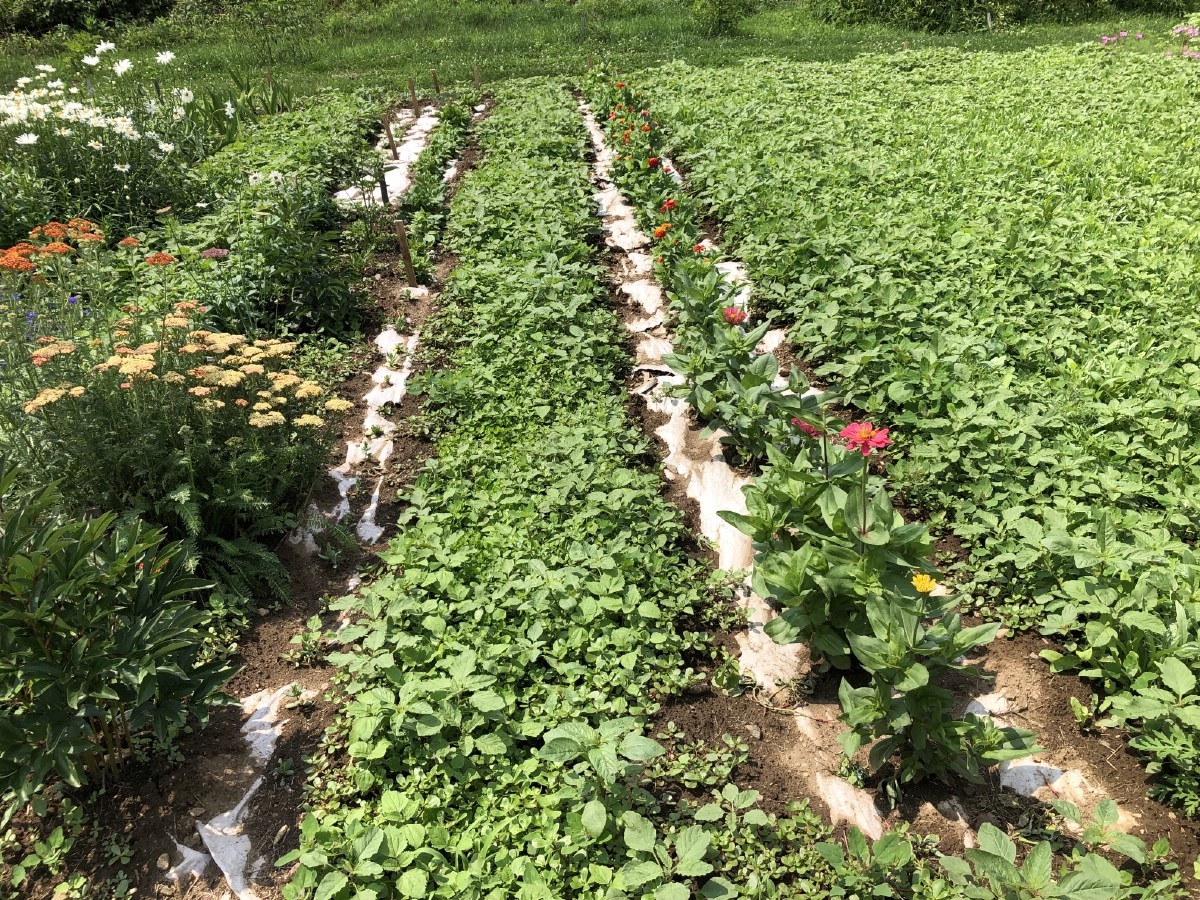
- It encourages worms. We all know how good earthworms are for the garden. It just so happens worms love paper, too.
- It retains moisture. Paper helps retain soil moisture in a few ways. As a weed barrier, it helps to reduce evaporation and therefore helps keep water in the soil. As it breaks down, and/or when used as a mulch or soil-builder, it adds absorbent organic matter to your soil. This is great for sandy soils, stony soils, and soils that drain too fast.
- It helps maintain optimal soil temperatures. Like any mulch, paper mulch and weed barriers help to keep soil and plants roots cool in the summer and warm in the winter, protecting from both damaging freezes and high heat.
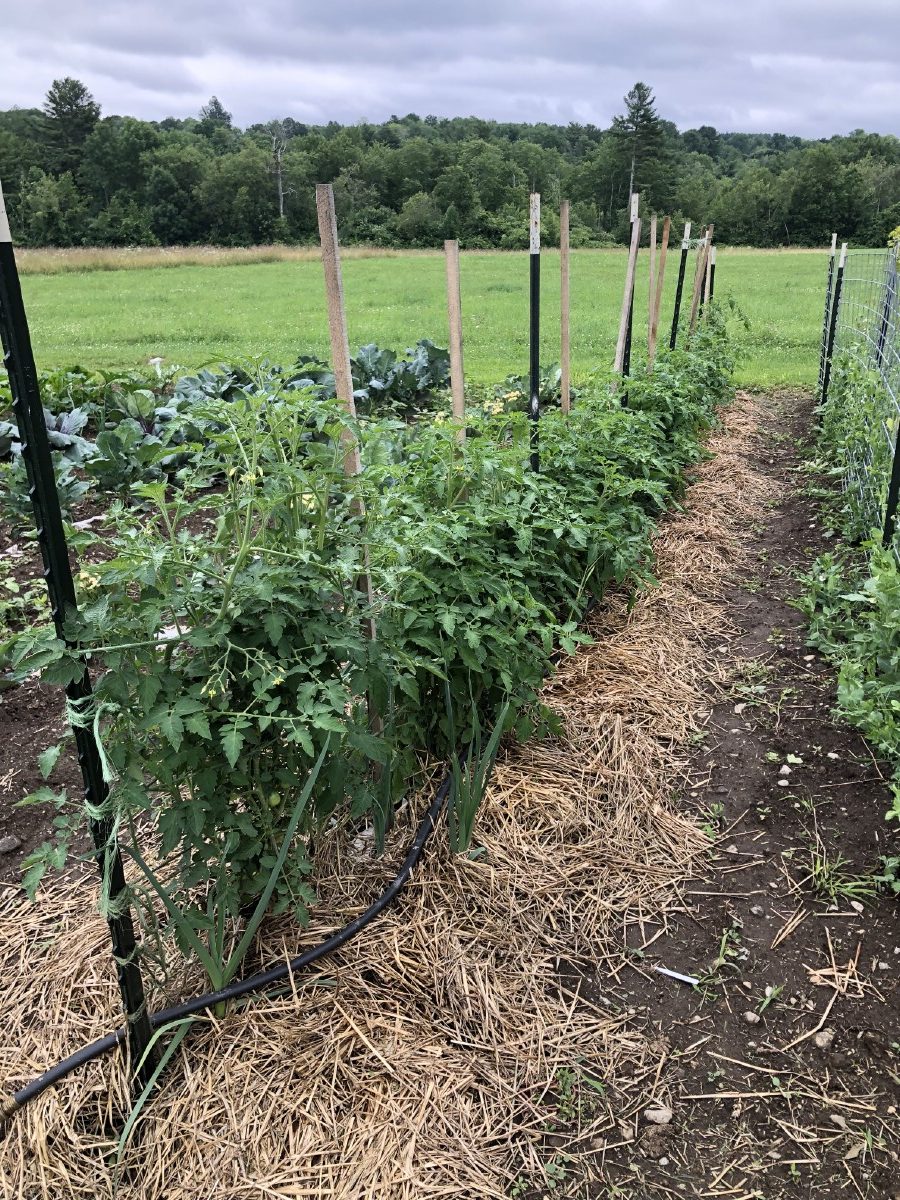
- It’s approved for organic gardening. Paper and cardboard are both approved for use in organic gardening and crop production. If you’re looking to reduce or end harmful herbicide sprays, chemicals, and other less eco-friendly options, use paper.
- It helps control insects and plant disease. Mulches and weed barriers are helpful in controlling some insects and larva and in controlling plant diseases like fungal disease and blight. These diseases spread from soil splash and spores that overwinter in soil, so controlling that splash with barriers like paper helps to prevent and control disease.
What Kind of Paper to Use for Garden Weed Control
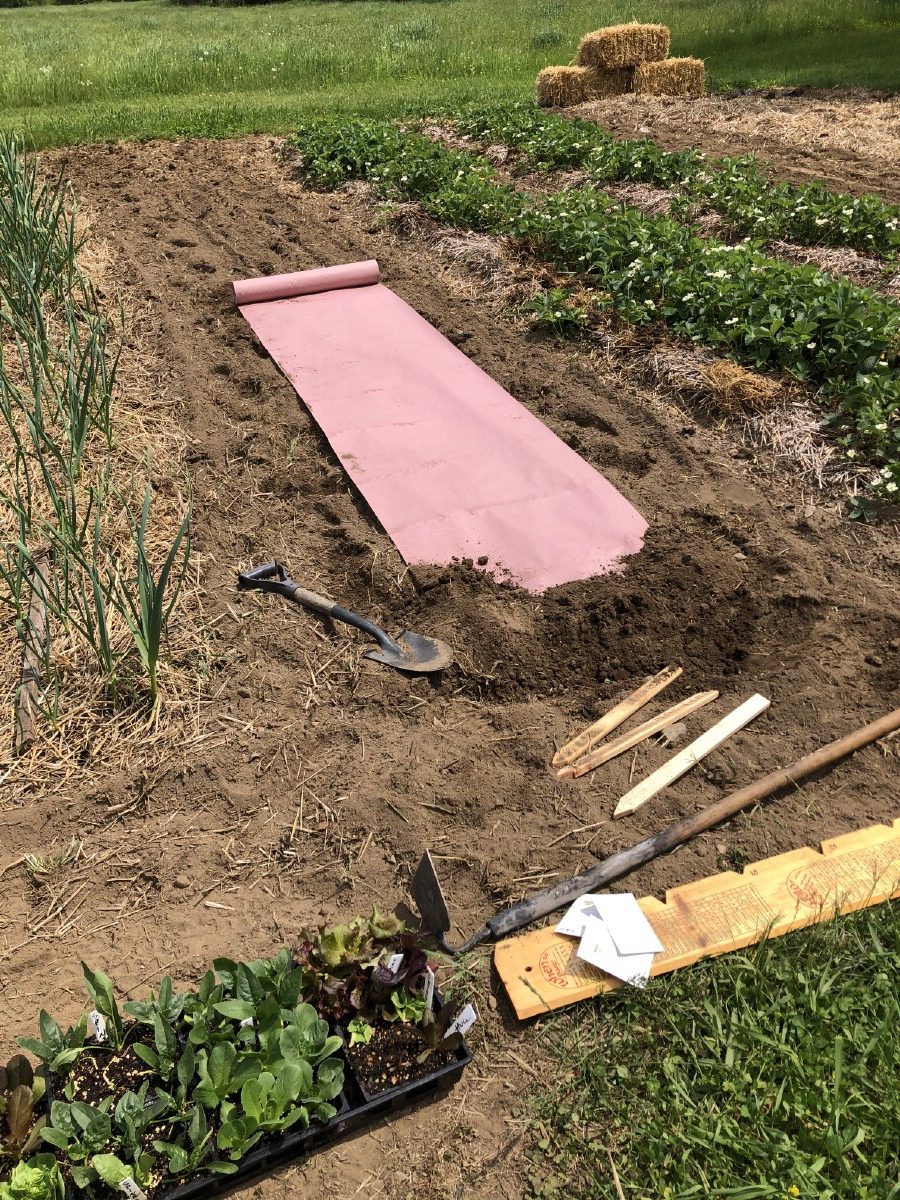
Before we talk about how to use paper to control weeds in the garden, let’s look at some good types of paper to use.
Newspaper – Newspaper is perfect for garden uses. And yes, glossy newspaper can be safely used in the garden, too. Glossies do break down more slowly—which can be good for weed control, but less good (not awful) for compost and other uses. When using newspaper for weed control you’ll want to apply it at least three sheets thick.
Cardboard – Save up boxes from shipping, pizza boxes, et cetera. Cardboard is good because it is thick, can last at least a season (often more than one), and supplies a good, thick barrier without ripping that is hard for weeds to break through. It is advisable not to use laminated boxes because these coverings may not break down in the soil. Cut the boxes down in single-layer sheets before laying them out. You do not need to double them; one sheet of cardboard is sufficient.
Garden paper – There is paper that is sold in rolls expressly for gardening and weed control. It’s a good option but it tends to be pricy, at least compared to other paper options.
Packing paper – Save up all those big crumpled up sheets of brown paper that come with shipped products—the type used to take up box space or wrap breakable items. They can come in quite handy.
Contractor paper rolls – These are rolls of (usually brown) plain paper sold in hardware, contractor supply, and home improvement stores. They are what’s used to protect your floors when painting or doing remodeling or home projects. They are long rolls for cheap money, easy to roll out, and they help you keep nice, straight, consistent rows. A typical roll might be 100 to 150 feet so it will cover a lot of rows without breaking the budget. Two to three feet is an average width, which is just about right for your garden rows.
Craft paper rolls – These are usually the same thing as what’s sold as contractor paper rolls, just labeled differently. You can often find them in arts and crafts or school supply stores.
How to Use Paper for Weed Control
Truly there’s not a lot involved in using paper as weed control, but there are a few keys to success with paper as opposed to plastic or weed barriers.
Ideally, Lay the Paper First
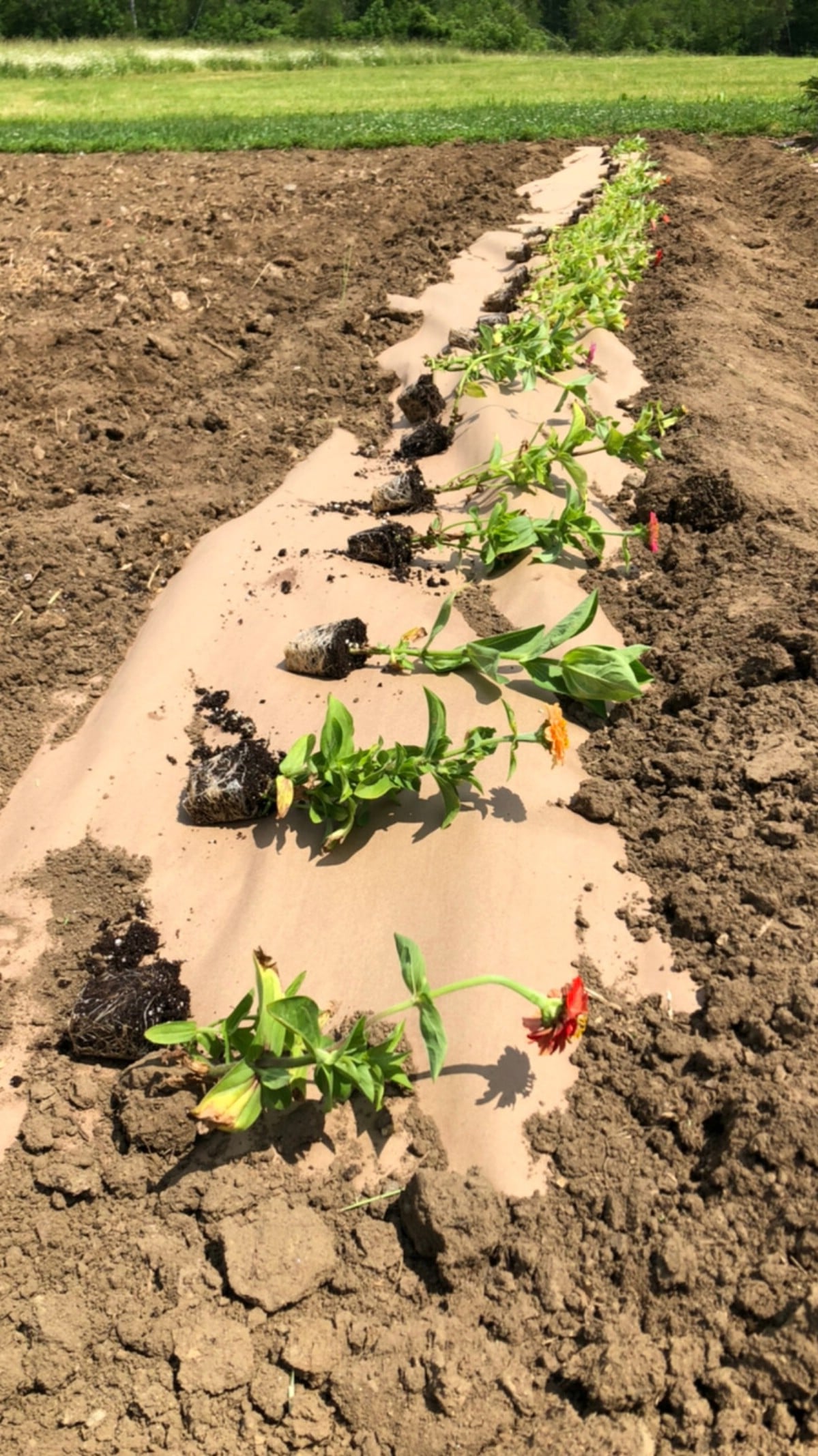
First off, it is best to lay the paper out and mulch or weight it completely before you plant. Then you can easily poke or dig through the paper to set your plants in. This is much faster and easier than laying paper around the plant.
For Existing Plantings and Garden Beds
If you already have plants in the ground—for example, if you have perennials planted and you are adding the paper weed control to the garden bed, you can cut or lay the paper around the base of your plants to cover the target area and mulch on top. Just be aware that any plants you cover will also be killed, just like the weeds. Newspaper is quite workable for something like this. Small sheets of cardboard are good for this, too.
Laying Out Different Types of Paper
If using newspaper, lay the sheets at least three sheets thick. You can double that amount for a stronger layer if you like. Keep in mind the thicker you lay your paper, the harder it is for water to soak through and the longer it will take to break down. So, it might depend on how long you want the barrier to be there (just one season or for longer than that?).
If you are using contractor paper, garden paper, or crafts rolls, one layer is sufficient for most applications, but for added protection you can double the paper up.
Weighting and Keeping Paper from Blowing
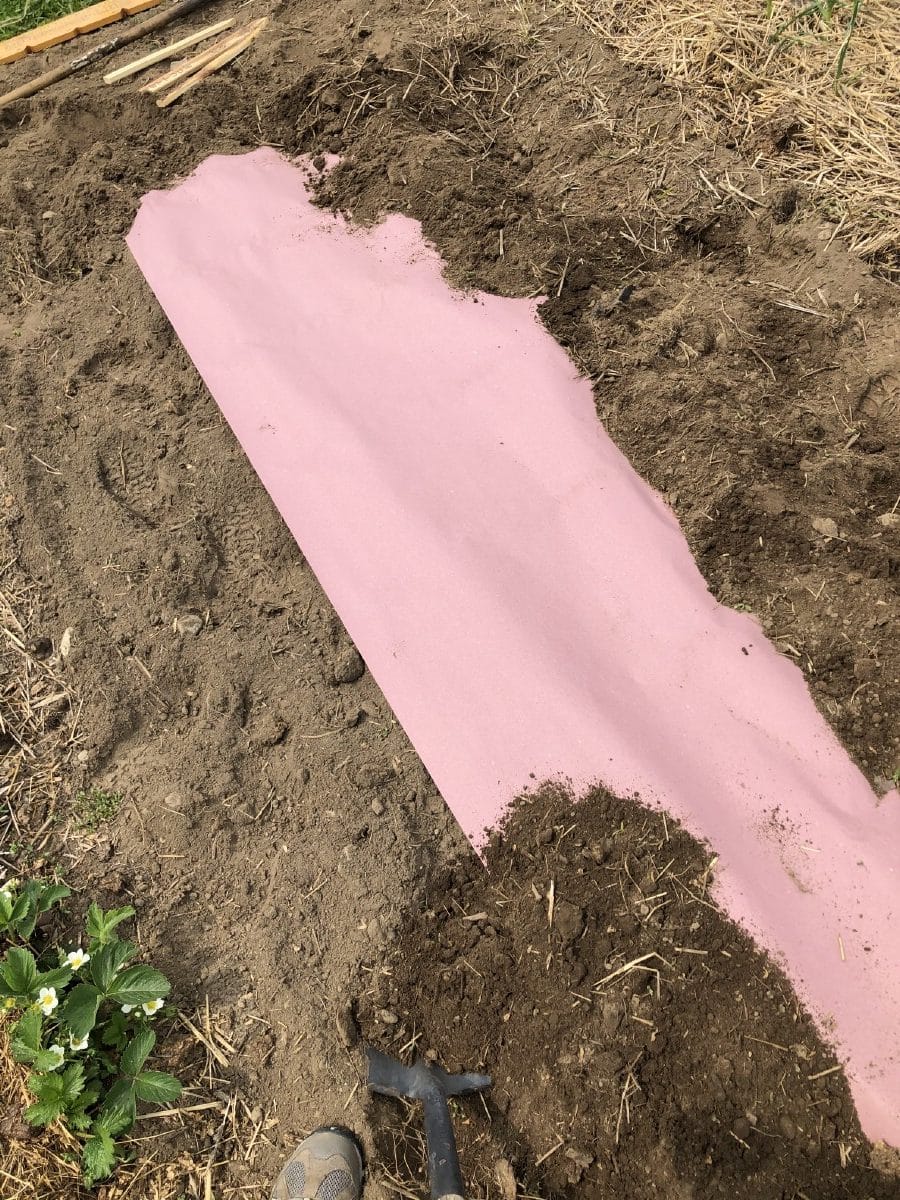
The most important thing is to keep the paper in place and to keep it from blowing away and ripping, both when you are laying it out and after it is laid. There are a few good options for this, and the one you choose will depend on your access to other mulch materials and how you want the paper to function.
If you are using rolls of paper for row cover, you need to cover all exposed edges so that it is not lifted and blown away. The stakes or staples that you use with plastic or landscape fabric will not work because it will rip through. The best way to do this is to roll out the paper and use a trowel to cover the edge with soil as you go.
Unless it is an extremely calm day, you’ll want to cover the edges as the paper is laid. Otherwise, even a little wind will lift the paper and send it flying like a sail. Once all the edges are covered, you do not need to mulch on top of the paper unless you want to.
Use Mulch to Keep Paper in Place
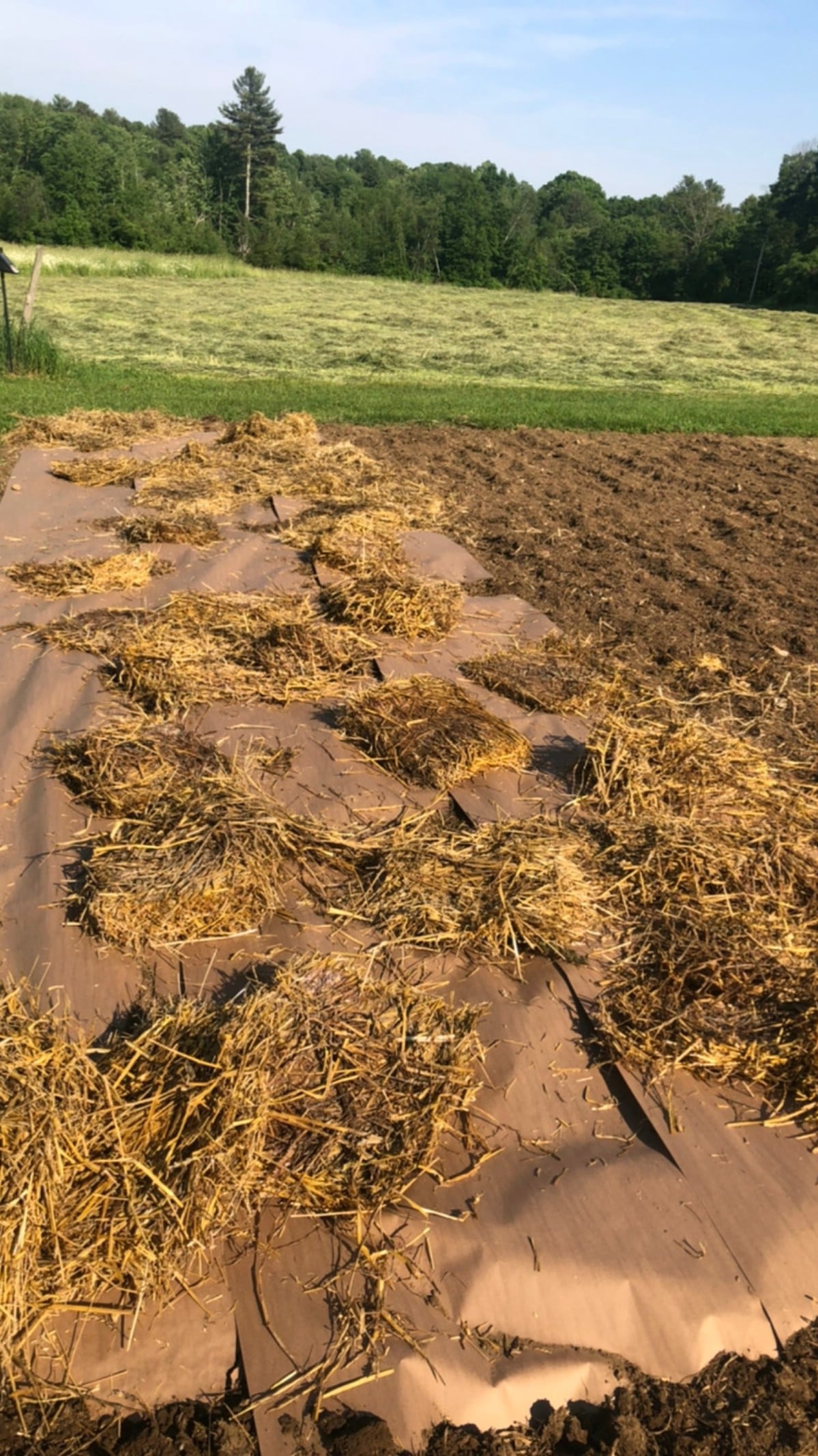
You can use mulch—like wood chips, straw, or sawdust —to lay over the top of the paper and hold it down. This will also help hide the paper if the aesthetics of the project are important to you.
Watering Paper for Weight
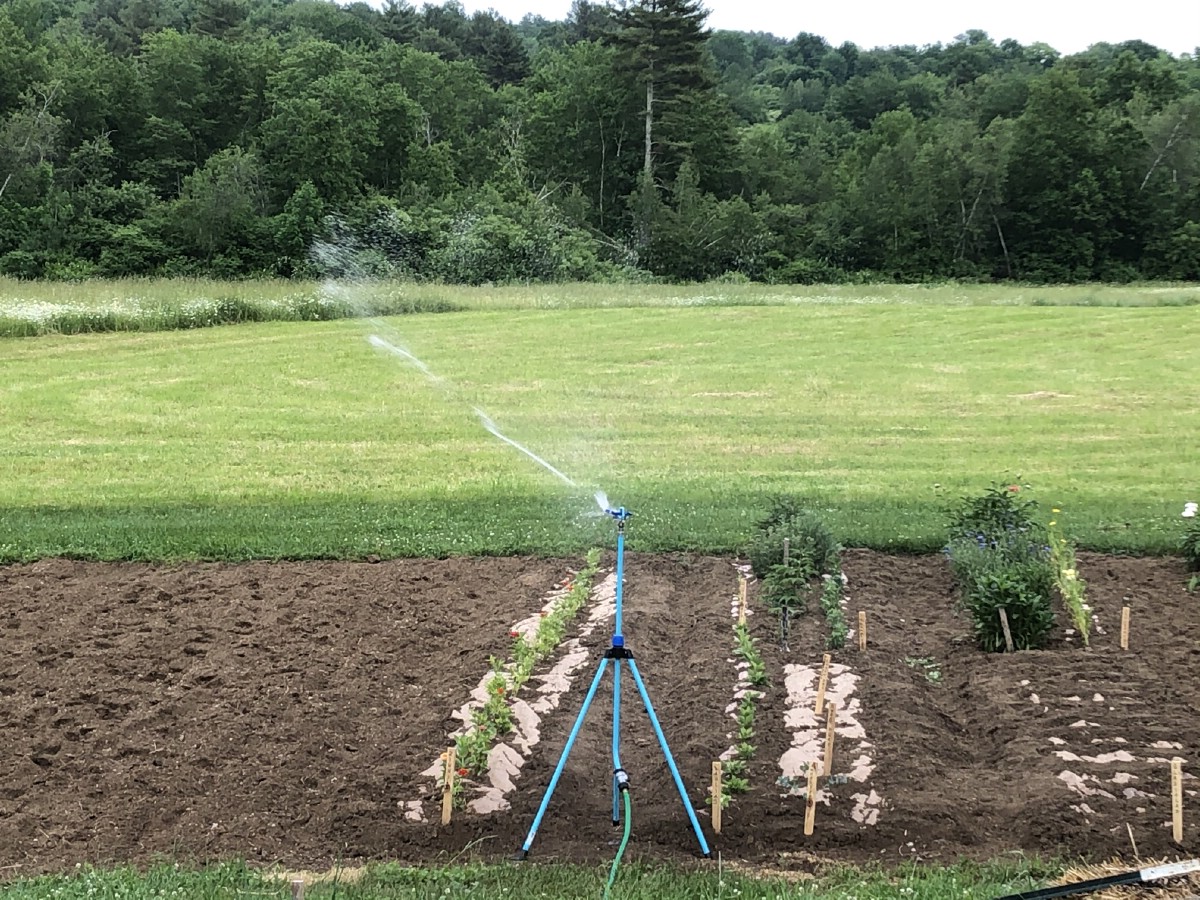
Watering paper or cardboard as you lay it to keep it in place until you can cover it with a second mulch product. Just spray the paper with a garden hose as you lay it down.
Quick-Start Summary of Paper Planting Instructions
To sum it up, here are the basic steps:
Planting with rolls in rows:
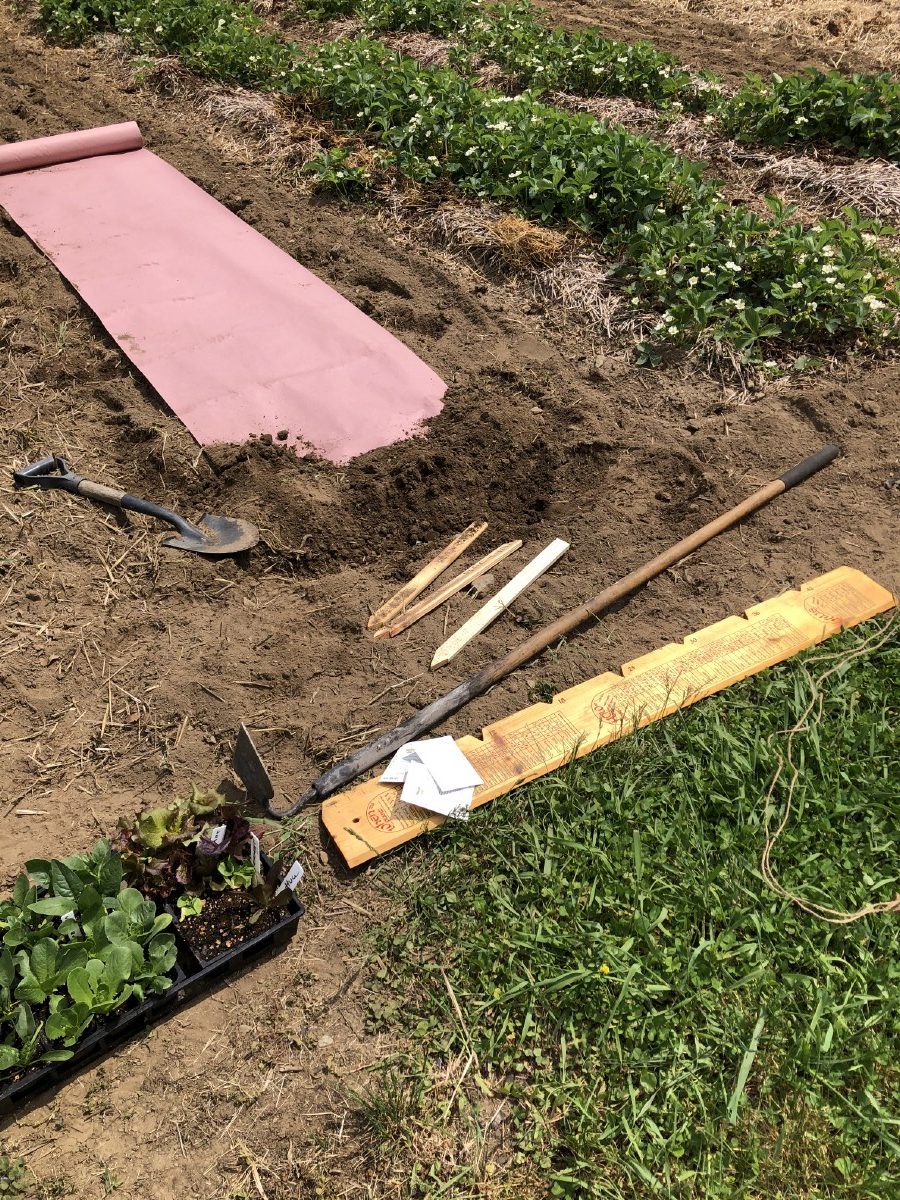
1.Roll out your paper in rows.
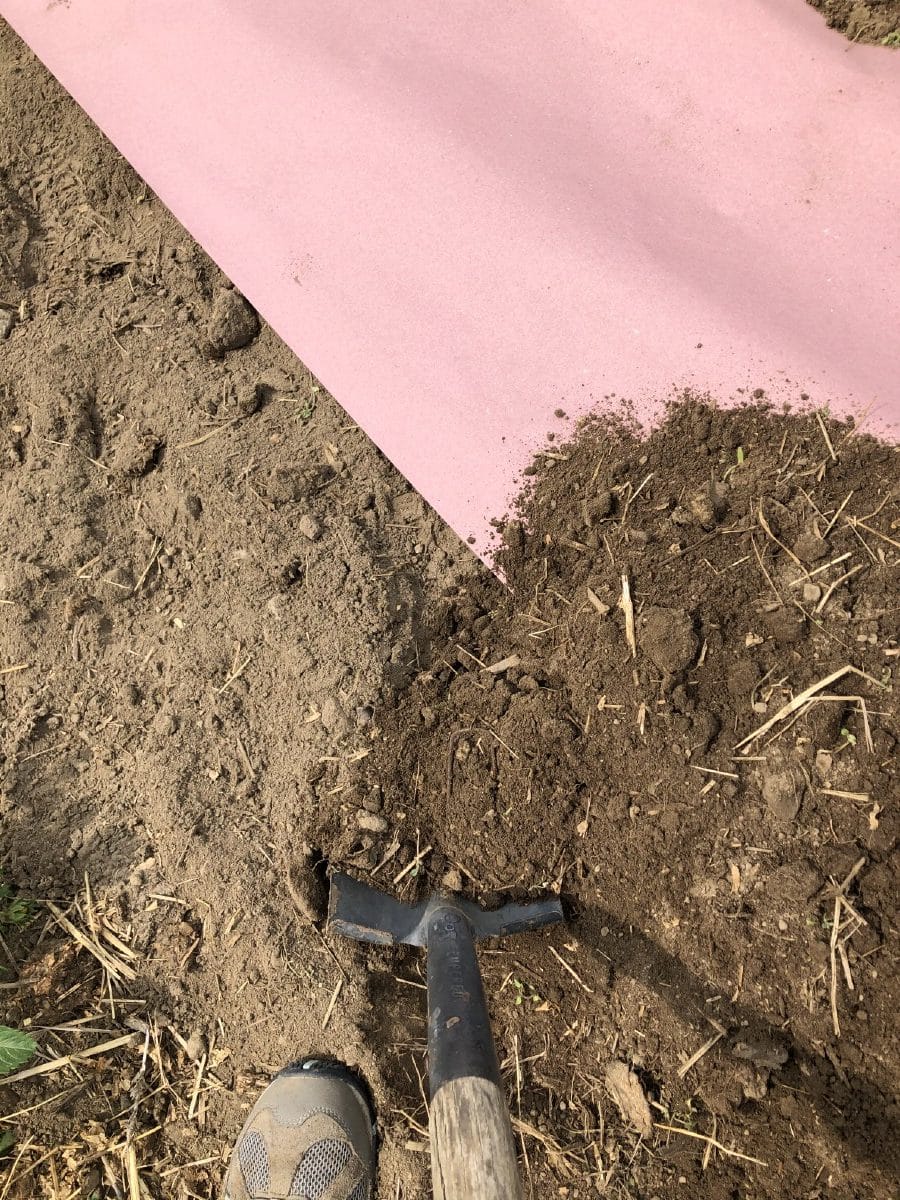
2. Using a trowel, scoop a small amount of loose soil over the edge of the paper to keep it in place. Cover all exposed edges.
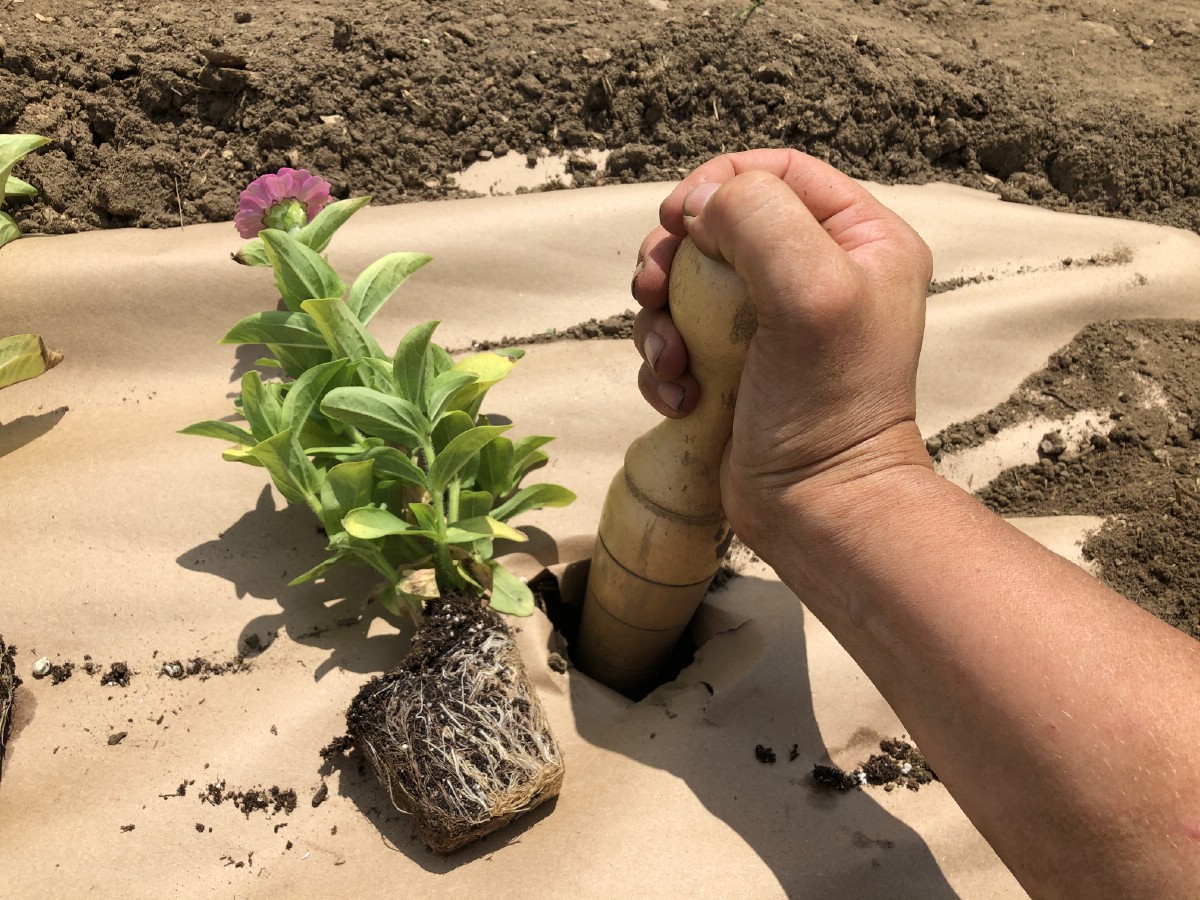
3. Use a garden knife, jack knife, or pointed garden dibber to cut a hole through the paper.
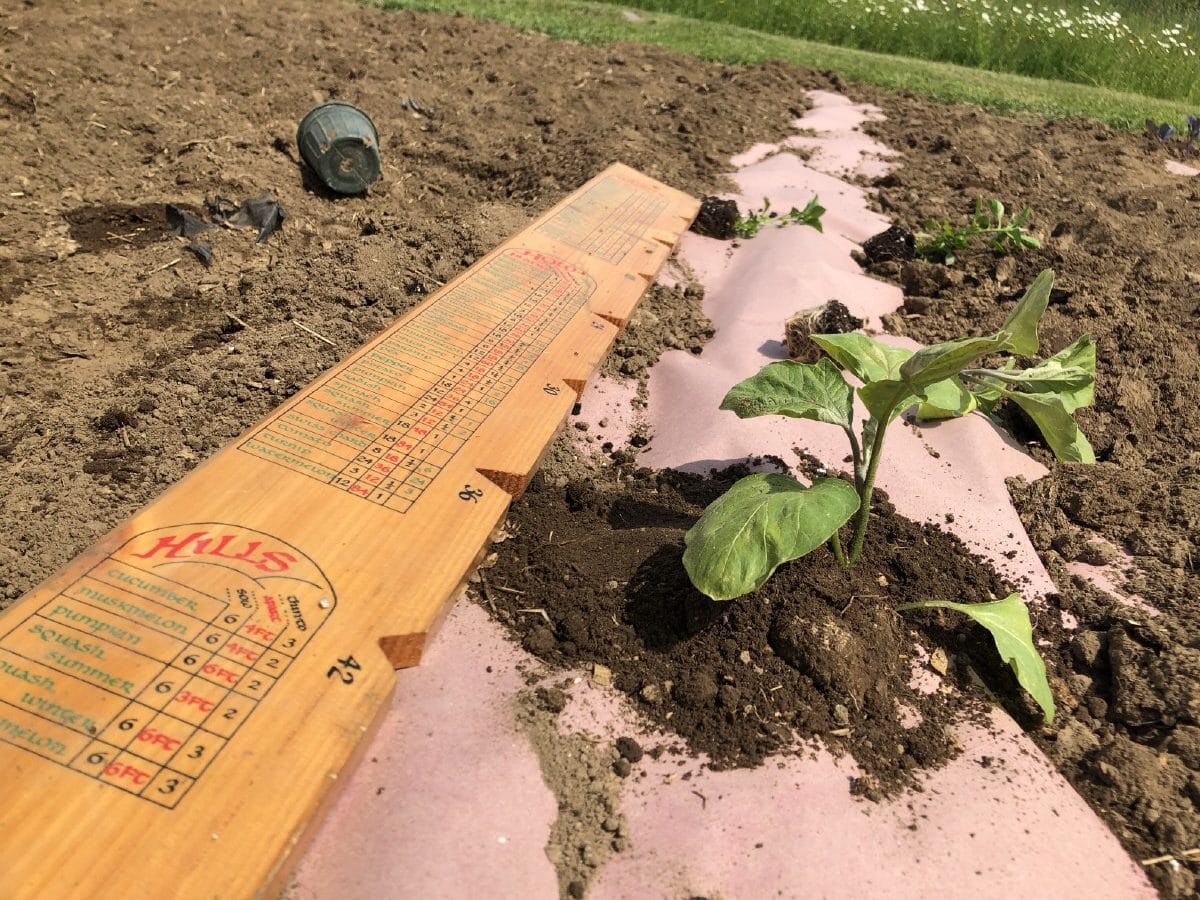
4. Plant your plant or seed as usual. Fill excess space with loose soil and lightly tamp down.
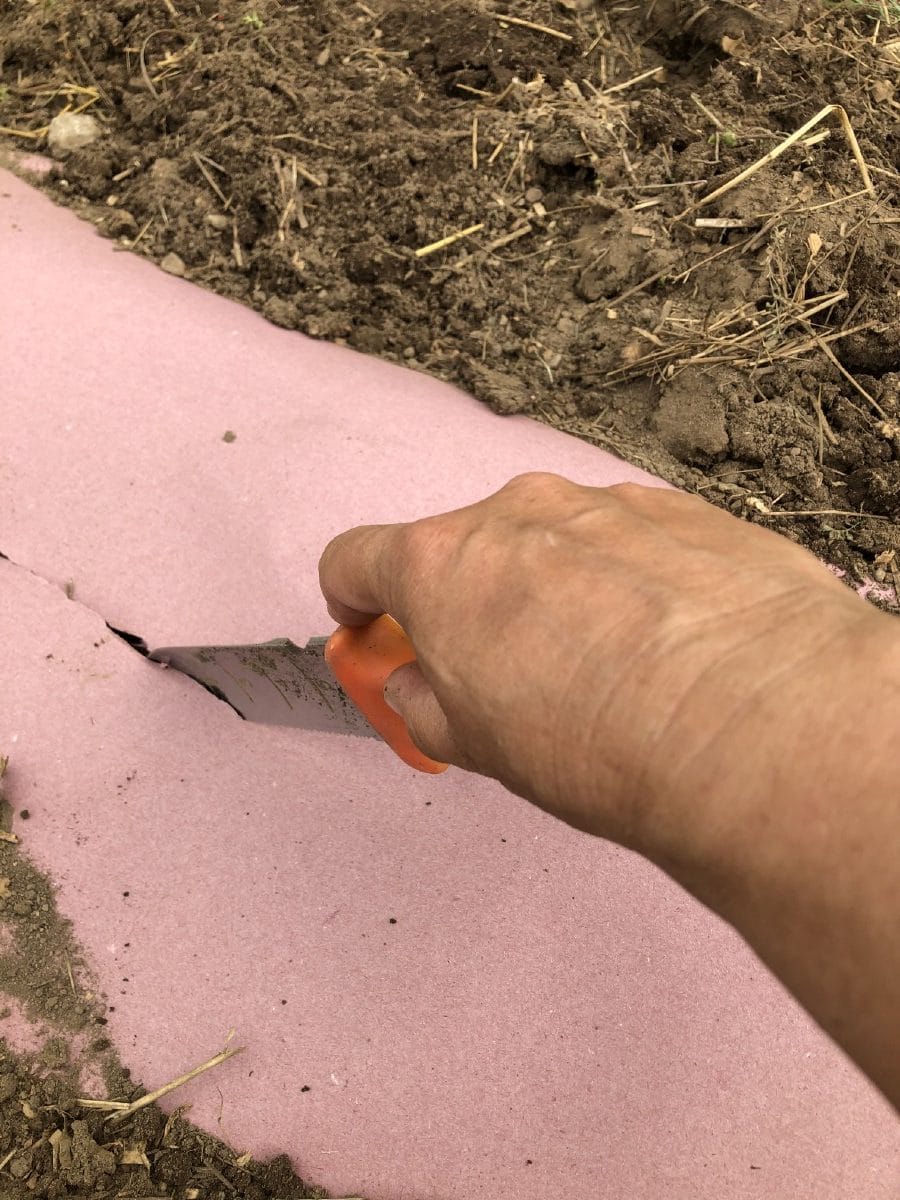
If you are using sheets of paper or cardboard, plant as follows:

- Lay your sheets of paper or cardboard in the shape of your garden area or around plants. Cover only weeds or plants that you do not want to live. Covering live plants will smother and kill them.
- Newspaper should be three or more sheets thick. Cardboard needs only one single layer.
- Overlap sheets so no soil is exposed, and weeds cannot poke through.
- Wet the paper or cardboard to hold it in place.
- Cover with a heavier mulch material such as straw, sawdust, wood chips, or bark mulch. Stone is not a good choice for paper because it tends to rip it but may work well with cardboard.
- If planting, cut and plant through the mulched barriers. Backfill with soil as usual.
Shredded Paper Mulch
Using shredded paper as mulch is one other way to use paper in the garden for soil improvement and weed control.
As a soil amendment, the shredded paper will need to be worked into the ground.
When using as a mulch, spread generous amounts of the shredded paper three or four inches thick, much the same as you would straw or a similar mulch. Avoid piling the mulch up against plant stems. It is helpful to water after applying the mulch. Watering will help mat the shredded paper together and keep it in place.
Creating New Garden Beds with Paper Products
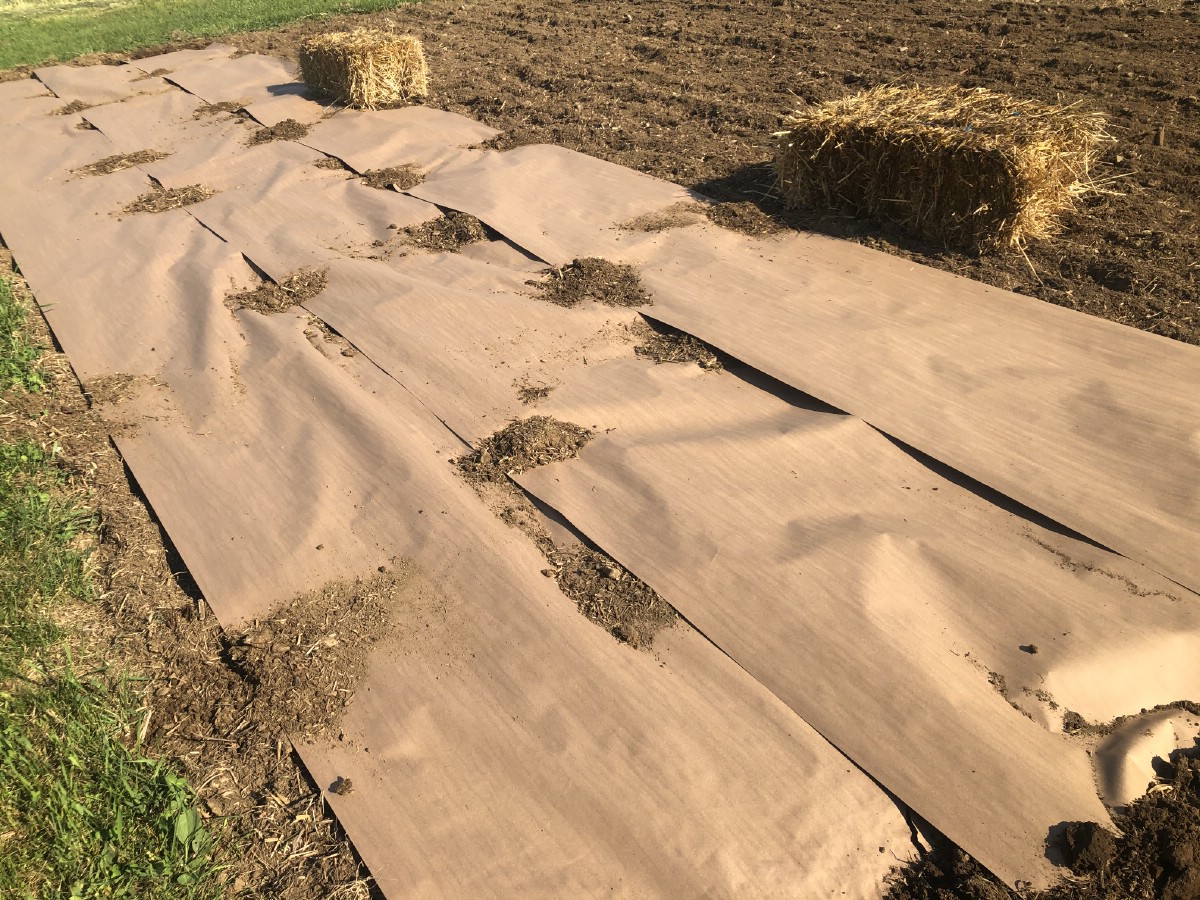
It is easy to make a new, no-till garden area with paper or cardboard.
For this application, heavy sheets work best (five or more newspaper sheets, doubled or tripled roll paper, or single sheets of cardboard).
If possible, it is best to mow over the area to cut grass and weeds as short as possible—this will also help kill weeds that do not like to be mowed. The paper will lay down better over trimmed grass.
Lay the cardboard or paper sheets over the entire area in the shape you want the garden bed to be. Make sure to overlap at the edges.
Water the paper or cardboard to keep it in place.
Cover with a thick (three inches) layer of bark mulch or another desired mulch product.
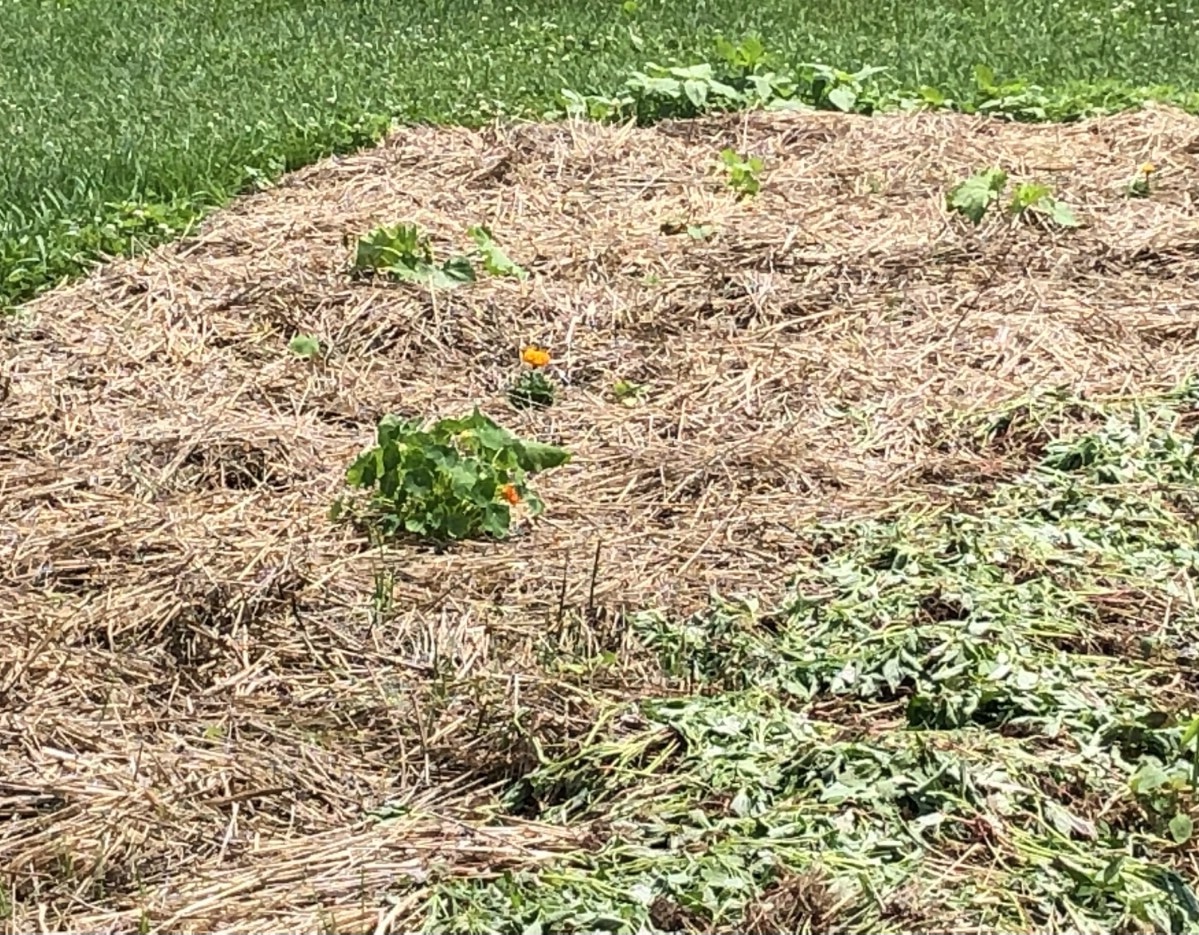
If time allows, it is best is do this a few weeks ahead of planting to kill the existing grass and weeds and keep them from breaking through at the planting sites. It can even be done over the winter or an entire season ahead (such as in the fall), which will give the mulch even more time to work and kill off grass and weeds. If you don’t have the time to spare, though, it is still okay to create your new bed and plant soon after.
Does Paper Deplete Nitrogen in Garden Soil?
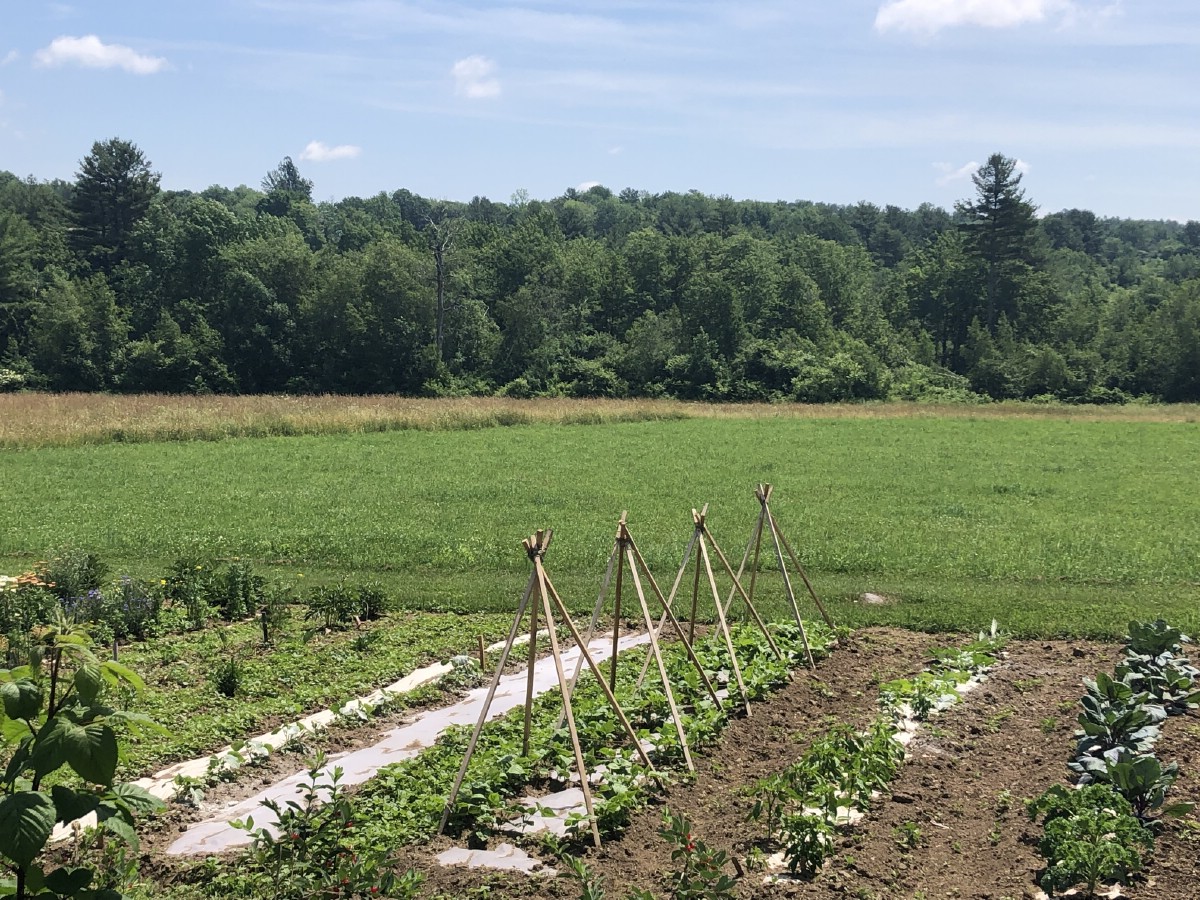
Before we go, one question that often comes up in reference to wood-based mulches like paper is whether it will deplete the soil of nitrogen. While it is true that carbon-based matter uses soil nitrogen as it decomposes, this is not the big issue that people often say it is.
First of all, there is a difference in using wood and carbon sources on top of the soil as opposed to mixed into it. When you use any wood-based mulch like paper, cardboard, sawdust, or wood or bark mulch as a top-dressing mulch product, it is not impacting the soil’s nitrogen much at all. That is because only a small amount of it is in contact with that soil layer and its depletion, and hence nitrogen use, is slow and occurs over time.
When carbon sources are tilled or worked into the soil the decomposition process does tie up nitrogen. However, it does not destroy it. It just borrows it. So, it returns after the paper or cardboard (or wood or chip or what have you) breaks down. It's just that in the meantime the nitrogen won’t be as immediately available to plants planted there. The paper only uses what it needs for decomposition, though, so if the soil is rich in nitrogen, you may not notice an impact at all.

Paper and cardboard are quite useful for use in the garden. They make excellent weed barriers, reduce your workload and improve the soil as you go. Make this the year you give paper gardening a try!

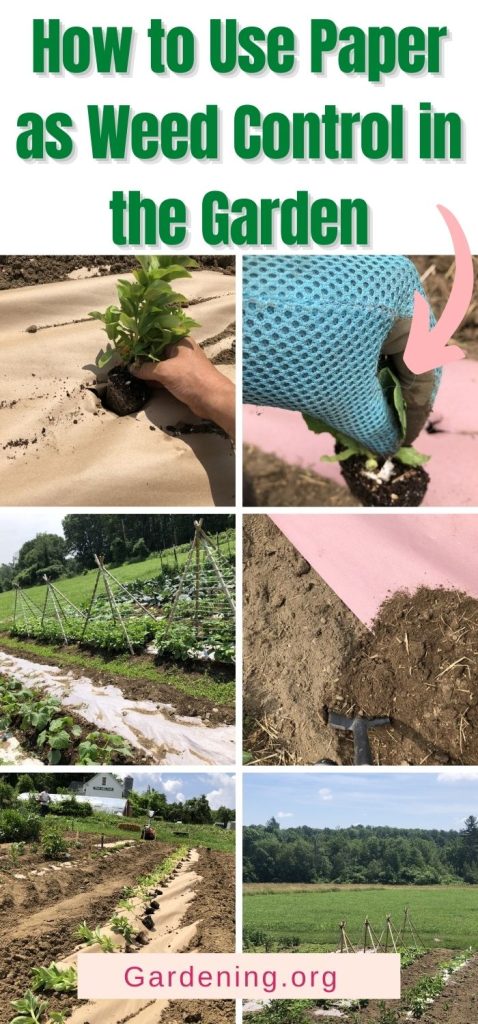
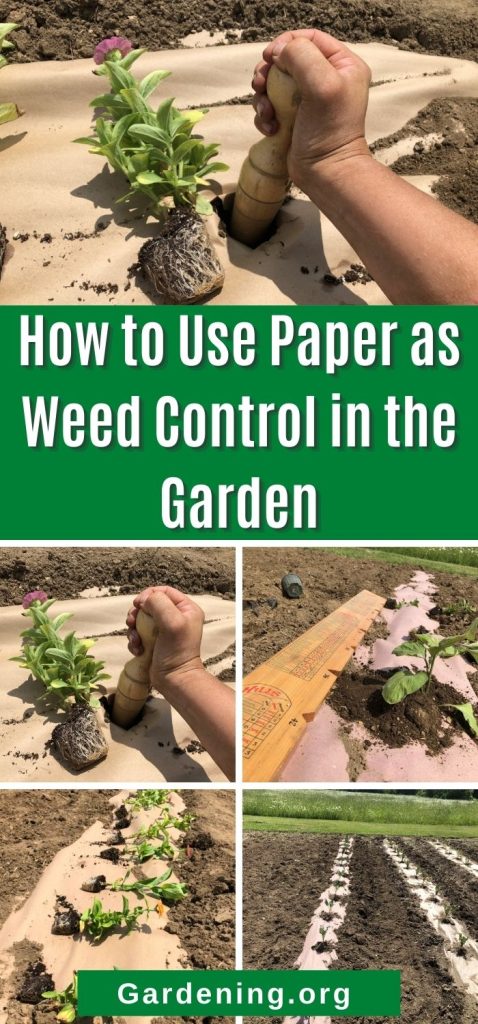
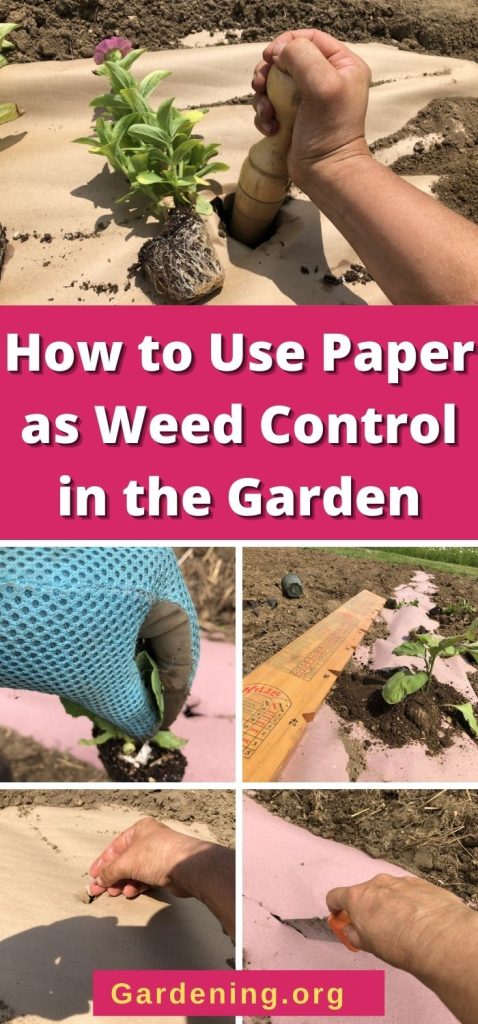
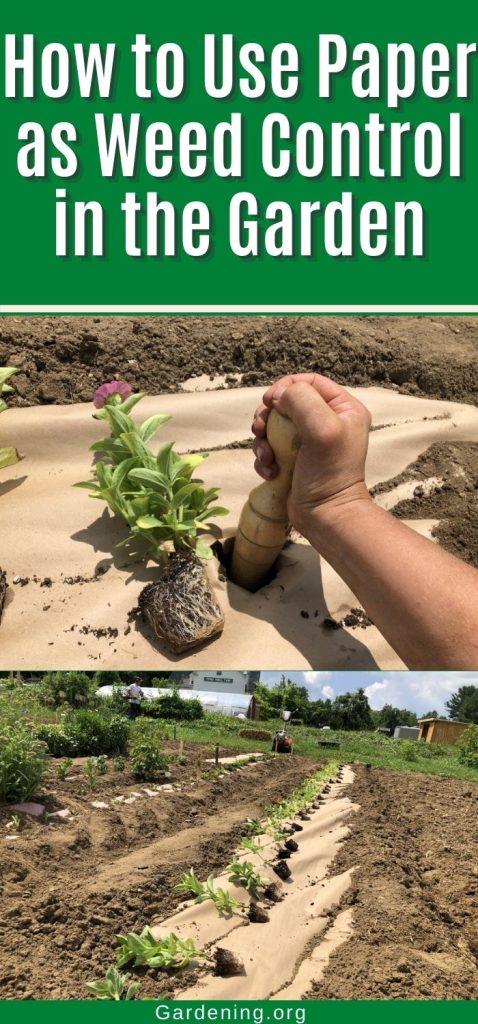
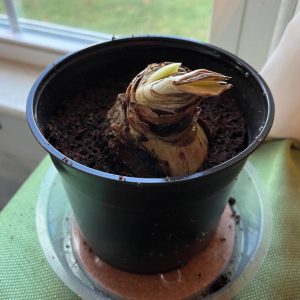



Serdalia G. Green
Excellent advice for the beginner gardener or elderly like me that aren't able to dig anymore. Thank you!
Mary Ward
You're very welcome. Glad to help!
Steve Hadley
I have use cut up Compostable leaf bags for weed and walk way control for the past 20 years. I first hold the paper down by doubling the edges and using 3 inch roofing nails to hold the edges. I then cover any connecting sections with saw dust from a local lumber yard.
Mary Ward
These are great tips! Leaf bags are a great idea for a heavier, compostable paper source. Thanks for sharing your tips and tricks!
Margecarter.com
I also use a soil conditioner that is biodegradable, environment safe and keeps the water in the ground so when it gets hot in the summer my plants don't whither.
Mary Ward
I can see how this could be very useful for people in some climates! Thanks!
Tina
This is great to know!!! What about shredded paper?? TY!!!
Mary Ward
Yes, shredded paper can be used as well. There is a short section that talks about it in this article. Please check out the heading "Shredded Paper Mulch". Thanks for reading!
sharon noah
All of this is so important to your garden. I joined a garden club. My garden is so much better. And this information is going to do wonders.
Thank you
Mulchindia
It is a very useful blog and very important information about Mulch.